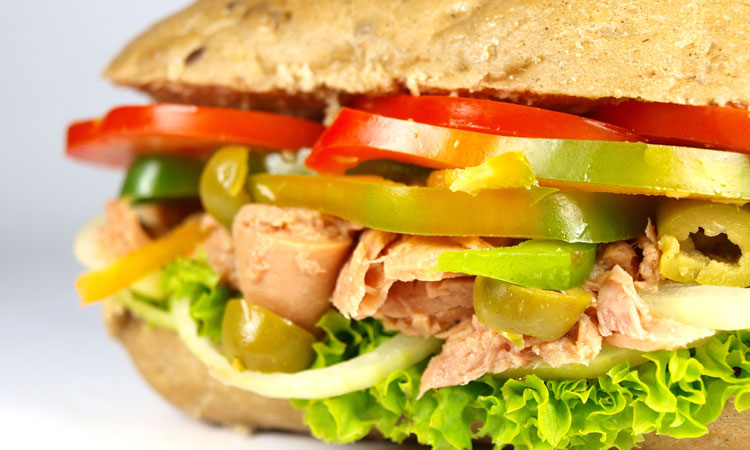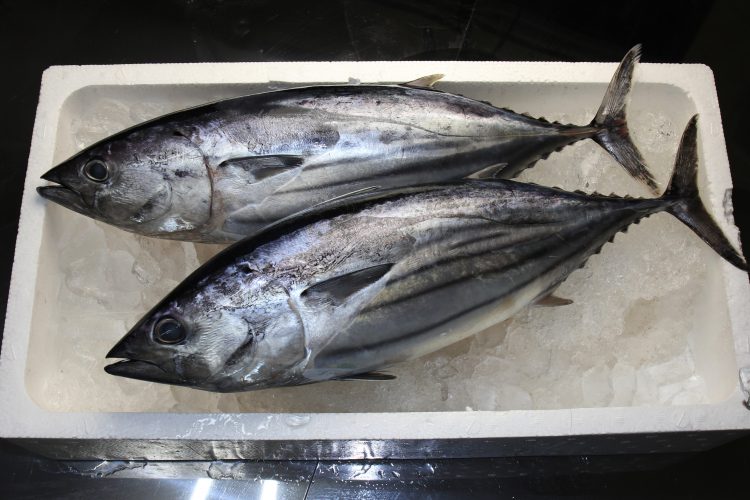Fishy business
- Like
- Digg
- Del
- Tumblr
- VKontakte
- Buffer
- Love This
- Odnoklassniki
- Meneame
- Blogger
- Amazon
- Yahoo Mail
- Gmail
- AOL
- Newsvine
- HackerNews
- Evernote
- MySpace
- Mail.ru
- Viadeo
- Line
- Comments
- Yummly
- SMS
- Viber
- Telegram
- Subscribe
- Skype
- Facebook Messenger
- Kakao
- LiveJournal
- Yammer
- Edgar
- Fintel
- Mix
- Instapaper
- Copy Link
Posted: 10 September 2021 | Arun Chauhan, Esther Phillips | No comments yet
Arun Chauhan investigates the fast food company Subway’s fake tuna scandal and reflects on what it means for the food industry.


In January 2021, a lawsuit was filed in the US District Court for the Northern District of California by two of Subway’s customers alleging that there was no tuna DNA present in Subway’s tuna fish. However, subsequent testing has refuted their claims and they have now been forced to retract their original lawsuit. The scandal has raised interesting questions about food labelling, adulteration and traceability and demonstrates a heightened sense of awareness of these issues amongst consumers.
The lawsuit filed against Subway claiming that their tuna fish contained no tuna DNA alleged several complaints, such as intentional misrepresentation, fraud and unjust enrichment, claiming the complainants “were tricked into buying food items that wholly lacked the ingredients they reasonably thought they were purchasing.” The complainants sought compensatory and punitive damages as well as legal fees. They also demanded an end to Subway’s alleged practice of mislabelling and a surrender of profits it earned from the practice.
The lawsuit stated that “independent testing repeatedly affirmed” that Subway sold the tuna product with no tuna fish, but it did not name the agencies that had conducted the tests. In a bid to uncover the truth, The New York Times commissioned a study which sent “more than 60 inches worth of Subway tuna sandwiches” to a lab for testing. The study concluded that: “No ample tuna DNA was present in the sample and so we obtained no amplification products from the DNA, therefore we cannot identify the species.” However, an earlier study by Inside Edition had found tuna in the sandwiches purchased.
A representative for the laboratory involved in The Times’ study outlined two possible conclusions: “One, it’s so heavily processed that whatever we could pull out, we couldn’t make an identification (on),…or we got some and there’s just nothing there that’s tuna.”
Subway has responded to the claims with the following statement: “There is simply no truth to the allegations in the complaint that was filed in California. Subway delivers 100 percent cooked tuna to its restaurants, which is mixed with mayonnaise and used in freshly made sandwiches, wraps, salads that are served to and enjoyed by our guests.”
It continued, “Given the facts, the lawsuit constitutes a reckless and improper attack on Subway’s brand and goodwill, and on the livelihood of its California franchisees. Indeed, there is no basis in law or in fact for the plaintiff’s claims, which are frivolous and are being pursued without adequate investigation.”
Testing limitations or something else?
There are several possibilities for the results indicating that no tuna DNA was present. In response to The Times study, Subway stated that:
“A recent New York Times report indicates that DNA testing is an unreliable methodology for identifying processed tuna. This report supports and reflects the position that Subway has taken in relation to a meritless lawsuit filed in California and with respect to DNA testing as a means to identify cooked proteins. DNA testing is simply not a reliable way to identify denatured proteins, like Subway’s tuna, which was cooked before it was tested.”
With questions raised over the accuracy of the testing methods, the original claim was amended to focus on whether Subway’s tuna is “100 percent sustainably caught skipjack and yellowfin tuna”. A recent “Eat This Not That!” article links Subway to tuna supplier, Jana Brands. According to the article, founder of Jana Brands, Steve Forman, was an early investor in Subway’s expansion into China and public import records show shipments of “pouch flakes light tuna brine” by Jana Brands from China under the label “Subway”.
Sean Wittenberg, cofounder of Safe Catch, told “Eat This Not That!” that the quality of Subway’s tuna is dictated by the parts of the fish that are used rather than the species. He believes that Subway uses 100 percent by-product of twice-cooked tuna called the “flake”. These are the cheap trimmings that come off the loin of the fish. By using 100 percent flake from the lines of a large factory, Subway can keep its costs low. Wittenberg also suggested that trimmings from other fish species can be included in this by-product. This could also explain why lab tests have been unable to find any tuna DNA.
In order to combat the negative coverage, Subway has established a website to offer information around its tuna.
On its website, it states: “FDA-regulated Subway importers use only 100 percent wild-caught tuna from whole round, twice cleaned, skipjack tuna loins.” And in response to the tuna “flake” controversy, Subway says:
“It’s also important to note that the word “flake” can be used in two different contexts when it comes to tuna, and this misunderstanding is a matter of semantics. Flaked tuna is not the same as tuna flake. Subway’s tuna product is listed as “Flaked Tuna in Brine” on its labels to describe the preparation of the tuna—specifically the piece size and the texture. It may display differently on the import records, where it appears to be written in short hand. Subway specifically prohibits the use of any tuna flake, byproduct, or remnants in its tuna.”


Subway insists that its tuna is made up only of the Skipjack variety
Food labelling and fraudulent misrepresentation
On the available public domain material, the Subway tuna scandal appears to be a lot of controversy with factual assumptions and some potentially credible explanations by Subway.
Had there been a very low percentage of tuna, or had the product consisted solely of “by-product flakes”, it would have been arguable that Subway had misrepresented factually what the product was and would be liable for damages not only for fraudulent misrepresentation but also being unjustly enriched, ie, selling a product mislabelled as a more valuable product (think sea bass often replaced by giant perch) when in fact it was something else of lower value and attraction to the consumer. However, this would depend upon the rules relating to packaging, labelling and compositional standards in the US. In the UK, compositional standards have been set for several common food items.
EC Regulation No.1169/2011, the Food Information to Consumers (FIC) Regulation, brings together EU rules on general food labelling and nutrition labelling. Under these rules, certain food items have specific requirements such as milk, honey, fruit juices, chocolate, meat products (such as sausages, burgers and pies) and fish. For example, pork sausages must contain 42 percent pork before they can be called “pork sausages”. Similarly, rules are in place to make sure fish is labelled correctly and consistently at the point of sale. EC Regulation No.1536/92 of 9 June 1992 sets out common marketing standards for preserved tuna including that the trade description must state the presentation in which the fish is marketed (ie, solid, chunks, fillets, flakes or shredded), covering its medium (ie, olive oil, natural, vegetable oil) and culinary preparation. In addition, preserved tuna must be prepared exclusively from fish of one of the species listed, namely:
1. Species of the genus Thunnus
- Albacore or longfinned tuna (Thunnus alalunga)
- Yellowfin tuna (Thunnus (neothunnus) albacores)
- Bluefin tuna (Thunnus thynnus)
- Bigeye tuna (Thunnus (parathunnus) obesus)
- Other species of the genus Thunnus.
2. Skipjack or stripe-bellied tuna
- (Euthynnus (Katsuwonus) pelamis).
Importantly, different species may not be mixed in the same container.
In bringing a claim for fraudulent misrepresentation in the UK, the claimants would have had to prove each of the following:
- That a false representation had been made (ie, the statement that the tuna was 100 percent tuna was untrue)
- Reliance on which induced them to enter a contract (ie, the contract to purchase a tuna Sub)
- Which thereby caused them loss (ie, paying a premium for tuna of superior quality than that which the Sub actually contained).
Fraudulent misrepresentation also requires the false representation to have been made knowingly, without belief in its truth, or recklessly as to its truth. To prove dishonesty, proof would be needed that Subway had no basis to believe they were selling tuna but still labelled it as such or they simply did not care for the truth of what they were selling. Given the facts we have, it is very unlikely that a claim for fraudulent misrepresentation would have been successful.
The claimants in the Subway tuna case failed to get past the first hurdle of its original claim – that the tuna contained no tuna DNA or that they could show that the DNA test was of no value to help Subway and absent any other evidence, one could assume Subway were lying. For example, had the case progressed, a factual enquiry into the complete supply chain of the tuna would have necessitated scrutiny.


The complainants failed to clear the first legal hurdle at Californian court
This case does highlight that DNA testing has limitations and inadequacies, particularly in relation to cooked product. Had the testing proven the claim that no tuna DNA existed in Subway’s tuna, then there is a chance that the claim would have succeeded if not for fraudulent misrepresentation, then for negligent or innocent misrepresentation.
Had there been a better factual basis apart from inference for these complainants, the fallout for Subway could have been far more significant. Subway operates a franchise system, and therefore the implications for these small business owners could have been catastrophic. The franchisee receiving stock from Subway would have an express or at least an implied understanding that the product that Subway provided was ‘what it said on the tin’. If it was proven that this was not the case, the damage to these franchisees would have been significant in terms of business losses and likely to have given rise to a chance for the franchisees to terminate their contracts with Subway and pursue damages themselves also.
Conclusion
With the rise of the plant-based food phenomenon, there is a greater focus on food labelling and the risk of misrepresentation and consumer confusion. Meat and dairy industries are feeling the pressure with moves in the US to restrict labelling of plant-based food citing consumer confusion over the use of “meaty” terms such as burger and sausage or the use of defined terms such as “milk” and “cheese”. Plant-based supporters argue that the risk of confusion is highly exaggerated with qualifiers such as “plant-based”, “dairy-free” and “vegan” making it clear that no animal products have been used to produce the goods.
One thing that is very clear is that consumers are becoming far more aware of food labelling and holding companies to account for what appears on their labels. If an item states that it is organic, for example, consumers want to know exactly what that means, how has it been produced, where and by whom. Labels do not just define the product, but detail how that product has come into being. Consumers want to know that companies’ supply chains, production methods and values fit with the label the product is given and that they can, to coin a phrase, judge a book by its cover.
About the author
Arun Chauhan


Arun has over 15 years’ experience as a solicitor advising on fraud-related matters, including employee fraud, bribery and corruption, investment fraud and professional negligence claims ranging in value of £50,000 to £10,000,000.
He is a regular speaker and trainer on counter fraud issues, an expert for the BBC on fraud related issues, and holds a post-graduate diploma in financial crime compliance with the International Compliance Association.
Esther Phillips


Esther practices all aspects of commercial litigation with her cases particularly focused on fraud related company issues (such as breach of fiduciary duties), misrepresentation cases and professional negligence.
As part of her role at Tenet, she supports the Team on specific research tasks and more widely in terms of professional development. Esther’s role also incorporates knowledge sharing and engagement.
Resources
https://www.independent.co.uk/life-style/food-and-drink/subway-tuna-sandwich-dna-lawsuit-b1871223.html
https://www.washingtonpost.com/food/2021/01/27/subway-tuna-lawsuit/
https://www.eatthis.com/news-subway-tuna-likely-origin/
https://subwaytunafacts.com/
Related topics
Food Fraud, Ingredients, Lab techniques, Quality analysis & quality control (QA/QC), Regulation & Legislation
Related organisations
Inside Edition, Jana Brands, Safe Catch, Subway, The New York Times









